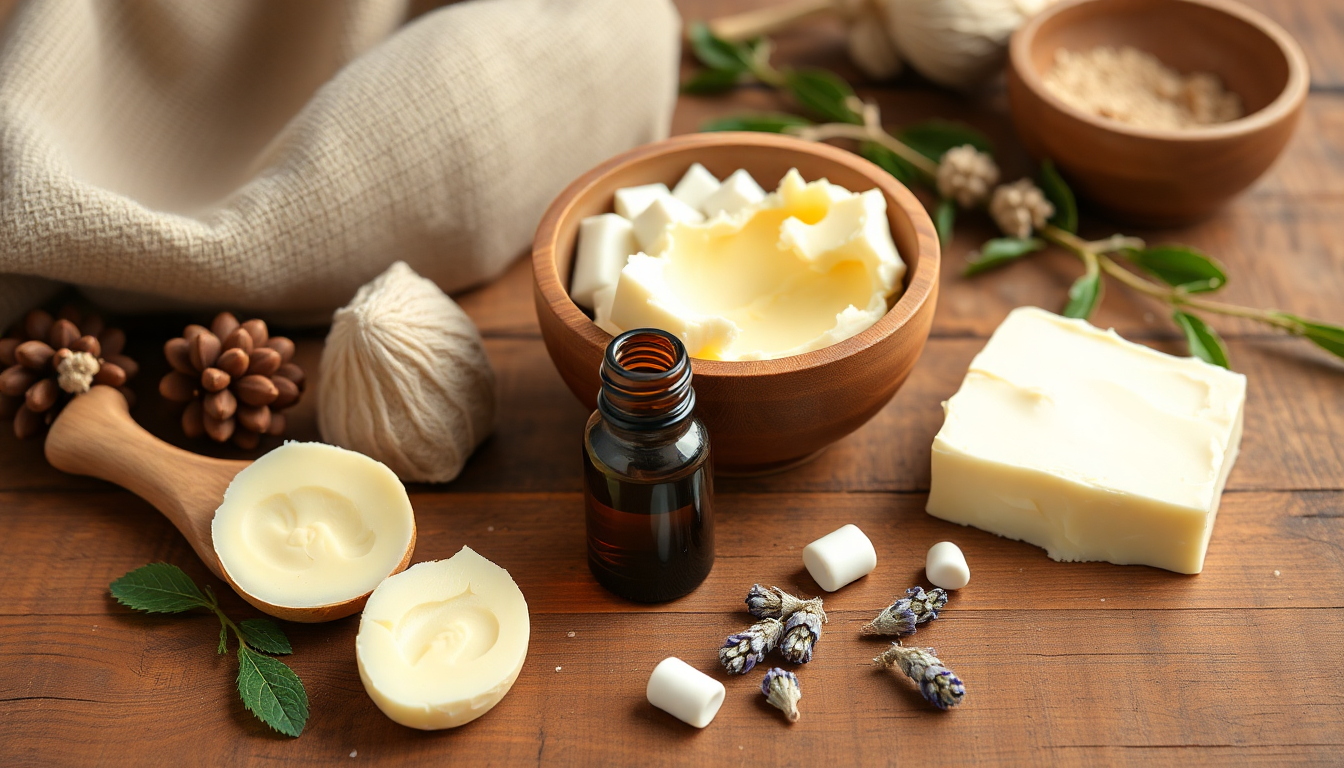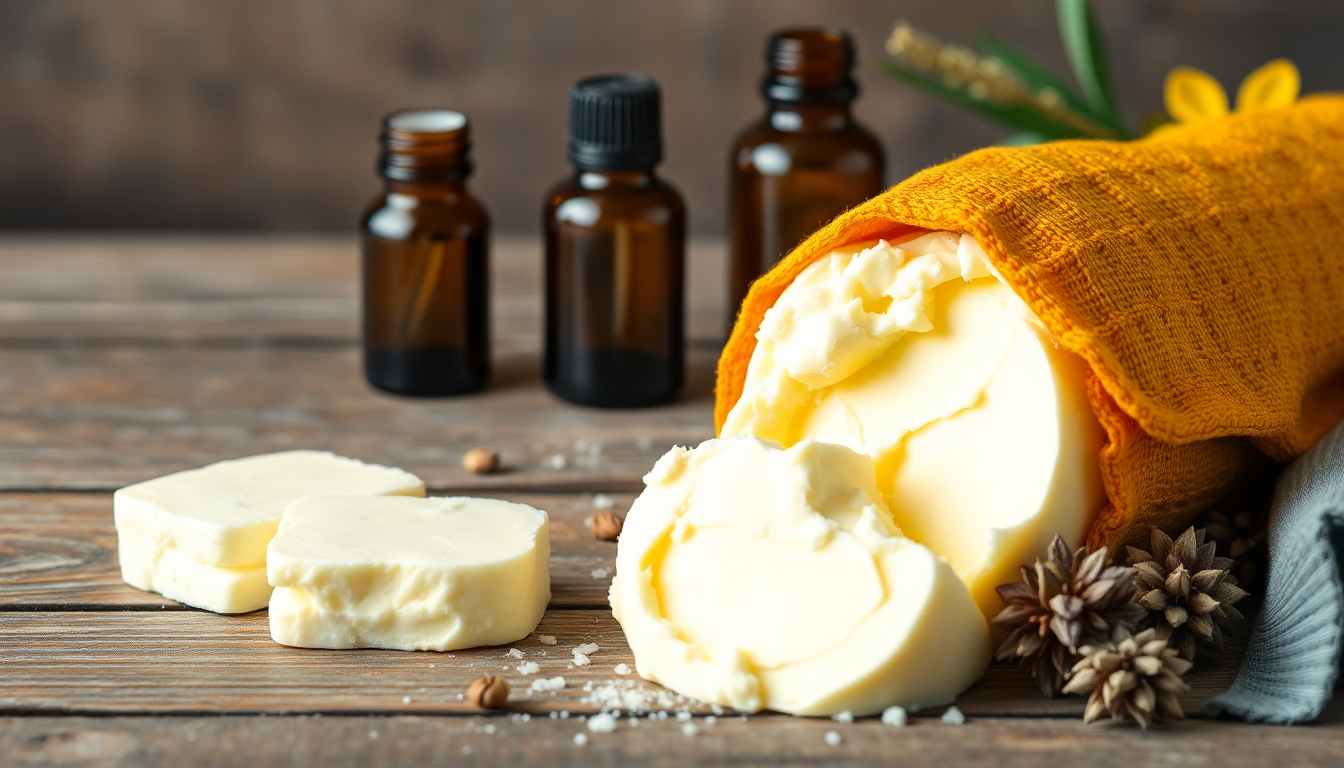Introduction
As we embrace the year 2025, the world of skincare continues to evolve, presenting us with innovative techniques and powerful ingredients that can significantly enhance our beauty regimens. The quest for radiant, healthy skin is universal, and understanding how to properly care for our skin is more important than ever. In this comprehensive guide, we will delve into essential exfoliation techniques and explore the remarkable benefits of shea butter and essential oils for all skin types. Get ready to revolutionize your skincare routine!
The Importance of Exfoliation
Exfoliation is a crucial step in any skincare routine, serving to remove dead skin cells and reveal a fresher, more vibrant complexion beneath. Regular exfoliation can provide several key benefits:
- Unclogs Pores: Exfoliation helps prevent the buildup of dead skin cells that can lead to clogged pores, significantly reducing the risk of acne and breakouts.
- Enhances Absorption: By sloughing away dead skin, exfoliation allows other skincare products, such as serums and moisturizers, to penetrate more deeply and work more effectively.
- Promotes Cell Turnover: Regular exfoliation encourages the skin’s natural renewal process, leading to a healthier, more youthful appearance.
- Improves Skin Texture: Consistent exfoliation can help to smooth rough patches and improve overall skin texture and tone.
- Brightens Dull Skin: By removing the top layer of dead skin, exfoliation reveals the fresh skin underneath, leading to a brighter and more radiant complexion.
Essential Exfoliation Techniques
To achieve optimal results, it’s important to choose the right exfoliation technique tailored to your skin type. Below are some popular methods of exfoliation:
- Physical Exfoliation: This technique relies on scrubs or exfoliating tools (like brushes or sponges) to manually slough off dead skin. While effective, it’s crucial to be gentle to avoid irritation, especially on sensitive skin.
- Chemical Exfoliation: Utilizing acids such as Alpha Hydroxy Acids (AHAs) and Beta Hydroxy Acids (BHAs), chemical exfoliation dissolves dead skin cells without the need for scrubbing. This method is often better suited for sensitive skin types as it minimizes the risk of physical abrasion.
- Enzymatic Exfoliation: Derived from natural sources like fruits (such as papaya or pineapple), enzymatic exfoliants provide a gentle way to break down dead skin cells, making them suitable for all skin types, including sensitive skin.
- Microdermabrasion: A professional treatment that provides deeper exfoliation, microdermabrasion can significantly improve skin texture and tone. It’s a great option for those looking for more dramatic results.
- Exfoliating Pads: Pre-soaked pads with exfoliating agents offer convenience and ease of use. They are perfect for on-the-go exfoliation and can be easily integrated into your nightly routine.
Finding the Right Exfoliation Frequency
One of the most common questions regarding exfoliation is how often one should exfoliate. This largely depends on your skin type:
- Oily Skin: Exfoliating 2-3 times a week can help manage excess oil and prevent breakouts.
- Dry Skin: Gentle exfoliation once a week is sufficient to avoid further dryness and irritation.
- Sensitive Skin: Exfoliate once a week using mild products to prevent irritation.
- Combination Skin: Tailor your exfoliation frequency based on the needs of different areas of your face, typically 1-2 times a week.
The Power of Shea Butter
Shea butter is a powerhouse ingredient in the skincare world, celebrated for its moisturizing and healing properties. Extracted from the nuts of the shea tree, this natural emollient is rich in vitamins, fatty acids, and antioxidants. Here are some reasons to incorporate shea butter into your skincare routine:
- Deep Moisturization: Shea butter provides intense hydration, making it ideal for dry or dehydrated skin. It penetrates deeply to nourish the skin and restore its moisture barrier.
- Rich in Nutrients: Packed with vitamins A and E, shea butter promotes skin healing and regeneration, supporting a more youthful appearance.
- Anti-Inflammatory Properties: Shea butter contains compounds that provide anti-inflammatory benefits, making it an excellent choice for soothing irritated or inflamed skin.
- Protective Barrier: By forming a protective layer on the skin, shea butter helps lock in moisture and guard against environmental damage.
- Natural Anti-Aging Benefits: The antioxidants in shea butter can help combat free radicals, reducing the appearance of fine lines and wrinkles.
Essential Oils: Nature’s Elixirs
Essential oils are not only aromatic but also provide numerous skincare benefits. Here are some essential oils to consider incorporating into your skincare routine:
- Tea Tree Oil: Known for its antibacterial and anti-inflammatory properties, tea tree oil is excellent for acne-prone skin and can help reduce the appearance of blemishes.
- Lavender Oil: This calming oil not only has a soothing scent but also helps reduce redness and irritation, making it a great option for sensitive skin.
- Rosehip Oil: Packed with antioxidants and essential fatty acids, rosehip oil aids in skin regeneration, improves elasticity, and can help fade hyperpigmentation.
- Jojoba Oil: Mimicking the skin’s natural oils, jojoba oil is suitable for all skin types and helps regulate sebum production, making it beneficial for oily skin as well.
- Frankincense Oil: Known for its anti-aging properties, frankincense oil can help minimize the appearance of scars and promote a more even skin tone.
Combining Exfoliation with Shea Butter and Essential Oils
For a truly revolutionary skincare routine, consider combining exfoliation with the nourishing properties of shea butter and essential oils:
- Post-Exfoliation Moisturization: After exfoliating, apply shea butter to lock in moisture and provide additional hydration.
- Custom Blends: Add a few drops of your favorite essential oil to shea butter to enhance its benefits. For instance, combining lavender oil with shea butter can create a calming face cream.
- DIY Exfoliating Scrubs: Create your own exfoliating scrub by mixing sugar or coffee grounds with shea butter and a few drops of essential oil for a fragrant and effective scrubbing experience.
- Targeted Treatments: Use shea butter as a base for spot treatments; add tea tree oil for blemishes or frankincense oil for age spots.
Skincare Routine: A Step-by-Step Guide
To help you integrate these techniques and ingredients into your daily routine, here’s a step-by-step guide:
- Cleansing: Start with a gentle cleanser to remove makeup and impurities.
- Exfoliation: Choose your preferred exfoliation method (physical or chemical) and exfoliate 1-3 times a week, depending on your skin type.
- Toning: Apply a toner to help balance your skin’s pH and prepare it for better absorption of products.
- Serum: Apply a targeted serum (like a vitamin C serum for brightening or hyaluronic acid for hydration).
- Moisturizing: Use a moisturizer enriched with shea butter to keep your skin hydrated and protected.
- Essential Oils: If desired, apply a few drops of essential oil for added benefits, either mixed with your moisturizer or as a spot treatment.
- Sunscreen: Don’t forget to apply sunscreen during the day to protect your skin from UV damage.
Conclusion
As we navigate through 2025, embracing effective exfoliation techniques along with the nourishing power of shea butter and essential oils can transform your skincare routine. Whether you have dry, oily, or combination skin, these ingredients cater to all skin types, ensuring a healthy and radiant complexion. By understanding the importance of exfoliation, the power of natural ingredients, and how to combine them effectively, you can achieve the luminous skin you’ve always desired. Start your journey towards revolutionized skincare today!




اترك تعليقًا
This site is protected by hCaptcha and the hCaptcha Privacy Policy and Terms of Service apply.